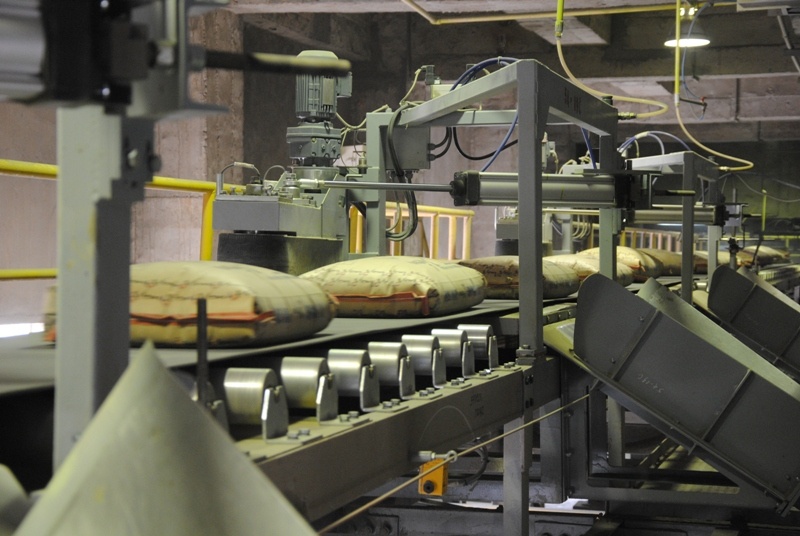Cement firms maintain pessimistic outlook
In Nghe An province, several cement plants have had to temporarily cease the operation of their kilns or significantly reduce capacity.
Having come on stream in early 2020 with an annual capacity of two million tonnes, the Tan Thang Cement plant, based in Quynh Luu district, has been running well below capacity for most of this year.
 |
Meanwhile, Vicem Hoang Mai, a member of the state-owned conglomerate Vietnam Cement Industry Corporation (Vicem), has only been able to sell around one million tonnes of cement over the year to date, down 15 per cent on-year.
This came as the Philippines – the company’s major export market – offered a lower price. Several cement plants in other localities have offered products with more competitive pricing, making a dent in the company’s sales.
Nghe An is home to four cement plants with a combined designed capacity of 7.8 million tonnes per year.
In the neighbouring Thanh Hoa province, cement production and consumption also face considerable pressure.
| Most cement firms anticipate that the slow consumption will continue to challenge both the revenue and profit targets of firms for the rest of 2023 and into Q1/2024. |
Amidst the gloomy consumer market this year, many building material production and trading units have seen their consumption fall by as much as 30 per cent on-year.
Thanh Hoa is home to several sizable cement plants, including Long Son Cement with four production lines and a combined capacity surpassing 10 million tonnes, Vicem Bim Son with a capacity of 5.3 million tonnes, and Cong Thanh Cement 6 million tonnes.
In Ninh Binh and Ha Nam provinces, the situation has been similar, with the limited consumption being unable to offset the supply capacity.
The lacklustre real estate market and modest pace of public investment disbursement are deemed to have cast a shadow on domestic cement consumption, causing production and trading plans to fall short of projections.
Q4 is generally the peak season for cement consumption, yet with the current market outlook, many firms predict the diminishing demand to prevail for the rest of this year.
Nguyen Ngoc Tinh, deputy CEO at Vicem Hoang Mai said, "Capacity reduction is inevitable in the face of the slow consumption and oversupply."
Even if demand surges for the remainder of the year, it is unlikely that Vicem Hoang Mai will reach its 2023 projections.
At the end of Q2, Vicem Hoang Mai posted $34.1 million in sales revenue and $26,250 in post-tax profit, down 22.8 per cent and 94.6 per cent on-year respectively.
The export channel also saw its second straight year of decline. In the first eight months of this year, the sector counted $927 million from exporting 21.4 million tonnes of cement and clinker, down 3.6 per cent in volume and 5.3 per cent in value on-year.
In 2022, the sector exported 30.65 million tonnes, down 15 million tonnes (33 per cent) on-year. This generated $1.36 billion in the export value, down $398 million compared to 2021.
The Vietnam Cement Association forecasts that the sector’s cement consumption this year will approximate 100 million tonnes, of which 62-65 million tonnes will come from domestic consumption, and 30 million from exports.
Most cement firms anticipate that the slow consumption will continue to challenge both the revenue and profit targets of firms for the rest of 2023 and into Q1/2024.
 | Cement companies identifying cash flow solutions Cash flow issues are posing a problem for cement enterprises struggling to generate enough revenue to maintain operations. |
 | Record input costs thwart cement groups Demand and oversupply issues continue to thwart the cement industry, as inputs for production are failing to see a drop in costs. |
 | Shipping firms eye rosier future Vietnam's import-export sector is showing signs of improvement amid rising demand from major markets such as the United States and Europe. Since early July, world markets have witnessed a recovery in sea freight prices, a signal to many that the shipping industry has overcome the challenging times of the previous eighteen months. |
What the stars mean:
★ Poor ★ ★ Promising ★★★ Good ★★★★ Very good ★★★★★ Exceptional
Related Contents
Latest News
More News
- Businesses ramp up production as year-end orders surge (December 30, 2025 | 10:05)
- Vietjet chairwoman awarded Labour Hero title (December 29, 2025 | 13:06)
- How to unlock ESG value through green innovation (December 29, 2025 | 10:03)
- AI reshapes media and advertising industry (December 29, 2025 | 08:33)
- FPT and GELEX sign deal to develop blockchain tech for global markets (December 29, 2025 | 08:29)
- Vietnam’s GDP forecast to grow by 9 per cent in 2026 (December 29, 2025 | 08:29)
- Women entrepreneurs are key to Vietnam’s economic growth (December 29, 2025 | 08:00)
- Vietnam's top 500 value-creating enterprises announced (December 27, 2025 | 08:00)
- The PAN Group shaping a better future with ESG strategy (December 26, 2025 | 09:00)
- Masan Consumer officially lists on HSX, marking the next phase of value creation (December 25, 2025 | 13:20)

 Tag:
Tag:



























 Mobile Version
Mobile Version